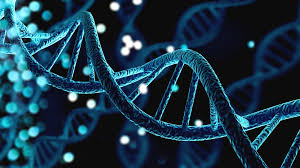
World's First Gene-Edited Baby for Rare Disorder Shows Hopeful Progress
In a historic leap for precision medicine, a baby born with a rare and deadly genetic condition has become the first known patient in the world to receive a tailor-made gene editing therapy — and early signs suggest it may be working.
Nine-month-old KJ Muldoon from Clifton Heights, Pennsylvania, was diagnosed shortly after birth with severe CPS1 deficiency, a rare genetic disorder that affects roughly one in a million babies.
The condition impairs the body’s ability to remove ammonia from the blood, often leading to life-threatening complications.
Without treatment, half of all affected infants do not survive.
Faced with a daunting prognosis, KJ's parents were presented with two choices: a traditional but invasive liver transplant, or an experimental, first-of-its-kind gene editing therapy specifically designed for their son.
“We were weighing all the options, asking all the questions,” said KJ's mother, Nicole Muldoon, in an interview with the Associated Press.
“We prayed, we talked to people, we gathered information, and we eventually decided that this was the way we were going to go.”
Within just six months, scientists from Children’s Hospital of Philadelphia (CHOP), Penn Medicine, and other partners developed a personalised gene therapy to target KJ’s exact mutation.
Their pioneering work, detailed in a study published May 15 in The New England Journal of Medicine, employed a novel form of CRISPR gene editing known as base editing.
Unlike conventional CRISPR, which cuts DNA strands, base editing subtly rewrites a single genetic “letter,” replacing the faulty component without breaking the DNA chain.
This technique, scientists say, reduces the risk of unintended genetic changes.
Delivered via lipid nanoparticles — fatty particles engineered to carry the treatment into liver cells — KJ received his first infusion of the gene therapy in February. He has since undergone two more treatments.
Now, at nine-and-a-half months old, KJ is showing signs of improvement. He is eating more, falling ill less frequently, and taking fewer medications.
“Any time we see even the smallest milestone that he’s meeting — like a little wave or rolling over — that’s a big moment for us,” said Nicole.
Although doctors caution that it is still early in the process, the initial results are promising.
“We’re still very much in the early stages of understanding what this medication may have done for KJ,” said Dr. Rebecca Ahrens-Nicklas, a gene therapy specialist at CHOP and lead author of the study.
“But every day, he’s showing us signs that he’s growing and thriving.”
Experts believe this breakthrough case could open the door to developing similar gene editing therapies for other rare and currently untreatable genetic disorders.
Unlike most gene therapies, which are usually developed for more common diseases due to their high cost, this custom-made treatment may signal a shift in how rare diseases are approached.
Dr. Kiran Musunuru, a gene editing expert at the University of Pennsylvania, noted that the cost of KJ’s personalised therapy was “not far off” from that of a liver transplant, which typically runs around $800,000.
“As we get better and better at making these therapies and shorten the time frame even more, economies of scale will kick in and I would expect the costs to come down,” he said.
“This is the first step towards the use of gene editing therapies to treat a wide variety of rare genetic disorders for which there are currently no definitive medical treatments,” Musunuru added.
As KJ’s journey continues, his progress is being closely monitored by medical experts and followed by the global scientific community — offering not just hope for his future, but potentially for countless others awaiting a cure.